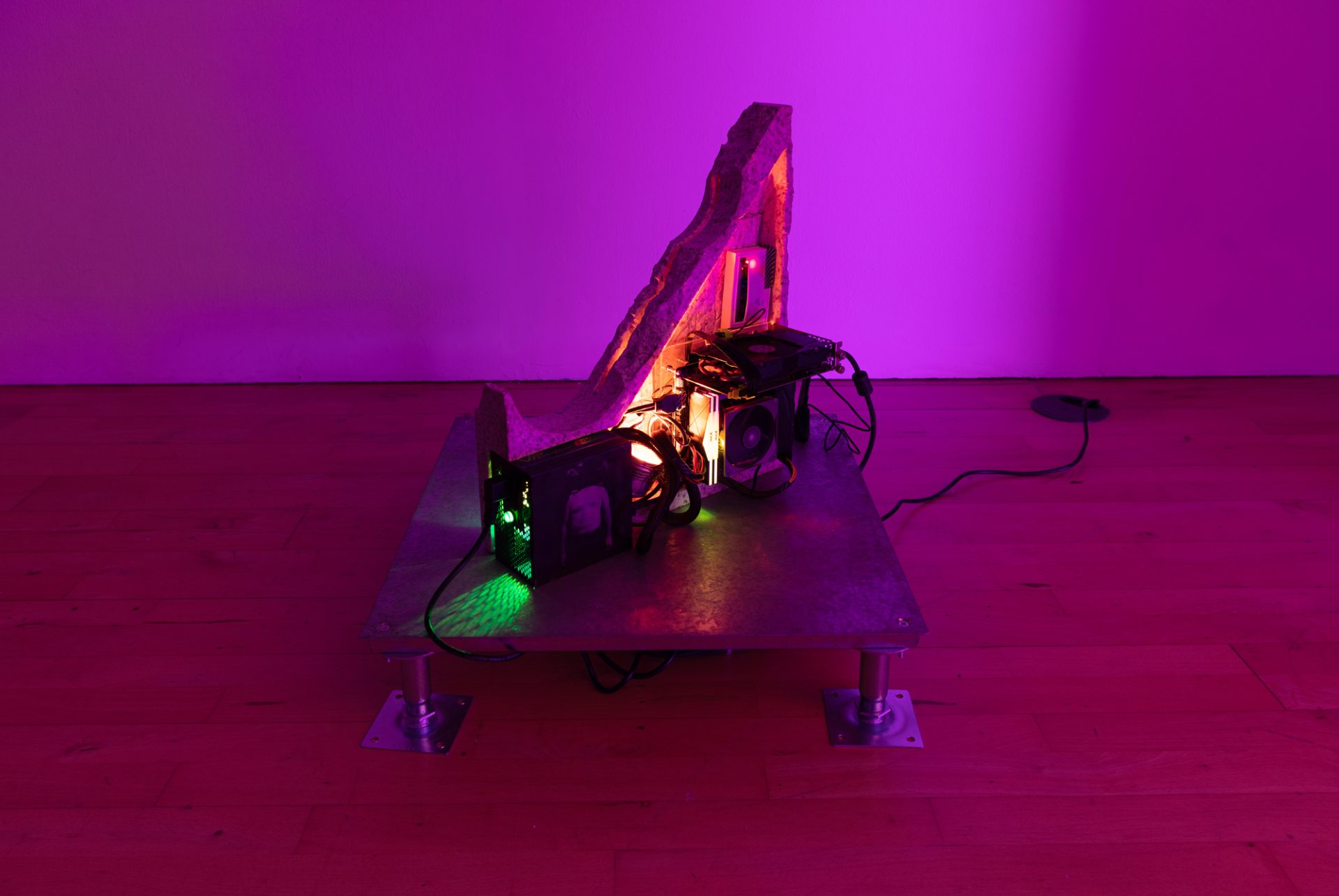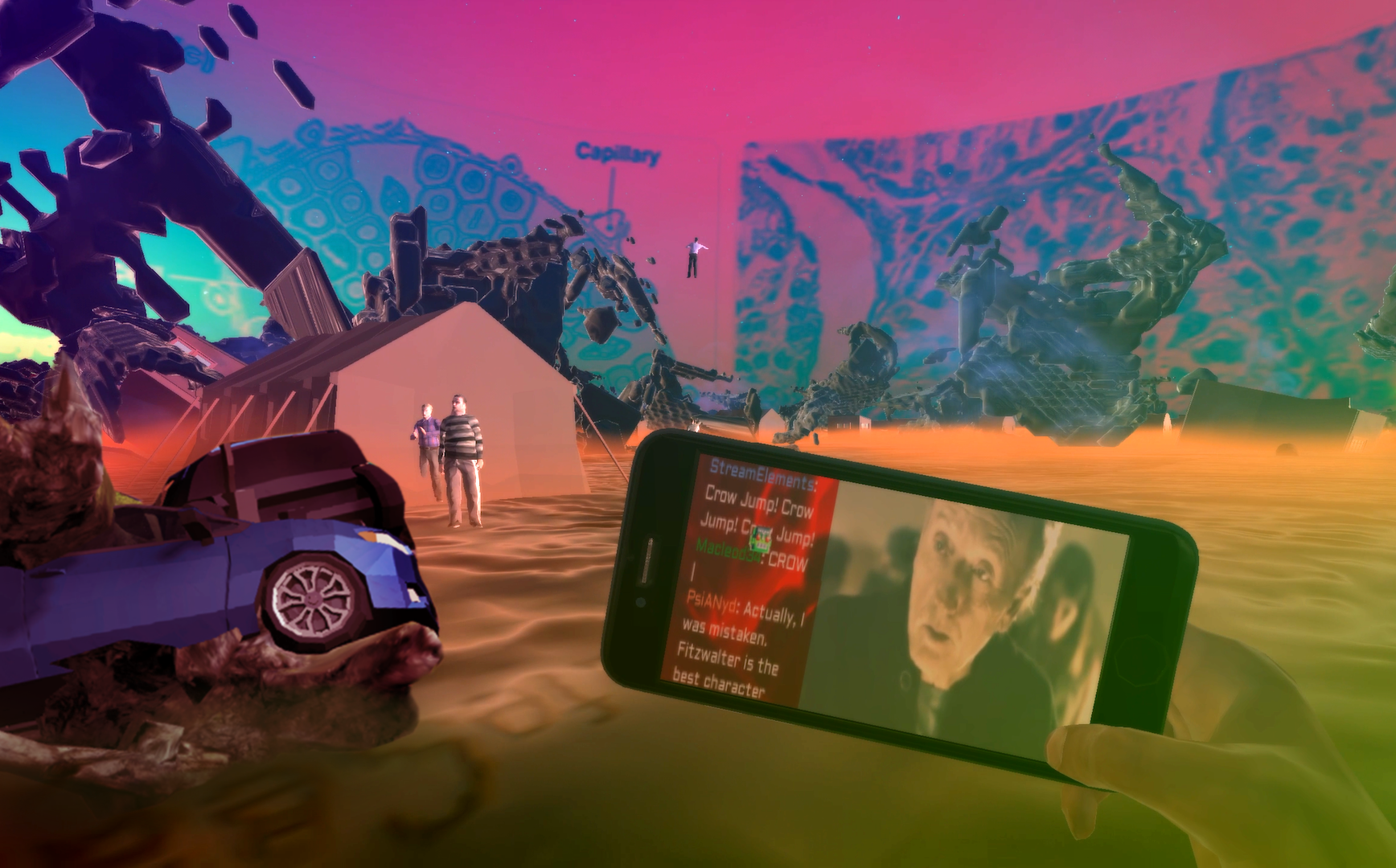Please Note: Gallery Closed Friday 7 & Saturday 8 April
Warning: Contains low and flashing lights and trip hazards. Live internet feed may include potentially offensive material.
The Cascades is a multi-channel installation that brings together an ongoing series of work by artist Daniel Shanken. The installation focuses on networks of information that run in the background of our lives, filtered and curated by intelligent algorithms that push bias and dissonance.
Centering on the probing and prodding, dissecting and inverting, looping and prying of these networks and their manipulating algorithms, this project produces ongoing renderings of generative worlds, fortuitous narratives, animations, and objects, while considering their real-world impact and cannibalization of the natural environment.
Incorporating live content feeds from multiple sources online such as YouTube videos and comments, internet radio, Google Image search, Reddit, and Twitch, the work builds an environment that fluctuates with incoming content scraped from the internet in real-time. Custom-trained machine learning algorithms respond to and alter the work, while offering insights through laser-projected text. Using randomness derived from physical sources such as radioactive decay and atmospheric noise, material is shuffled and displayed in unpredictable combinations that are never the same. This is in contrast to most search engines and hosting sites that control content and information through tailored interfaces that often exclude voices hidden in the noise.
The installation creates a spontaneous environment that allows viewers to enter through interfaces other than the normal internet screen space confronted on a daily basis. The work reflects the remnants of discarded technological production, oversaturated media landscapes, data centres, landfills, and mining tunnels. It draws on the intangible data-points, AI algorithms, and rendered objects often encountered in the periphery.
The Cascades was developed through research conducted during Shanken’s current PhD with the Contemporary Art Research Group (CARG) at Kingston University’s Centre for Practice Research in the Arts (CePRA). Shanken is due to publish a novel as a continuation of this project and his PhD.
Bore Hole (2021) is a never-ending, procedurally generated hole with an internet browser at the bottom that only goes to a continuously refreshing Reddit “new” content page. The hole is littered with user-created 3D models downloaded from free hosting sites. A Geiger counter embedded in a granite-cased computer, influences the work through randomness created from the radioactive decay of the granite and particles in the natural environment.
Gaoler (2018-2023) is a video application that incessantly searches YouTube, randomly picking and playing videos while a walking figure traverses an endlessly generated desert. The figure is forced to read out snippets of comments and conversations happening under different user uploaded videos. Incoming video and text are mashed together in real-time reflecting the diversity and disparate nature of current platform users.
Machine Visions (2022) is laser projected text generated by a custom-trained Machine learning chatbot that is endlessly talking to itself. The chatbot was trained on texts and novels about the end of the world, technological breakdown, consciousness, and the singularity. The sentiment of the text influences elements of the other works in the space including lighting and search terms.
Internet Autosarcophagy (2019-2023) is a video application that continuously scrapes content from various search engines, audio streaming, and hosting sites, randomly dispersing that content within a live-generated environment. Sound, image, and text come in as fragments from different sources creating a disjointed and ephemeral space. At the centre of the program is an autonomous first-person shooter system that switches from a cell phone, displaying
incoming Twitch chat messages, to different weapons that initiate and react to the sentiment of the incoming information.
Flesh Projections (2022) are a series of GAN-generated (Generative Adversarial Networks) objects. A 3D-GAN was trained on thousands of 3D modelled and scanned hand tools and technologies from Palaeolithic stone tools to contemporary technologies such as cell phones and laptops. The 3D printed objects represent a cross section of the artifacts the GAN made while trying to recreate this human technological history. For this installation objects are buried in blackened sand and floating in the air creating a hierarchy based on imagined affordances.
Cinematic Garbage Dump (2023) is an AI generated wallpaper made from collaged parts of images created from the prompt “cinematic garbage dump”.









